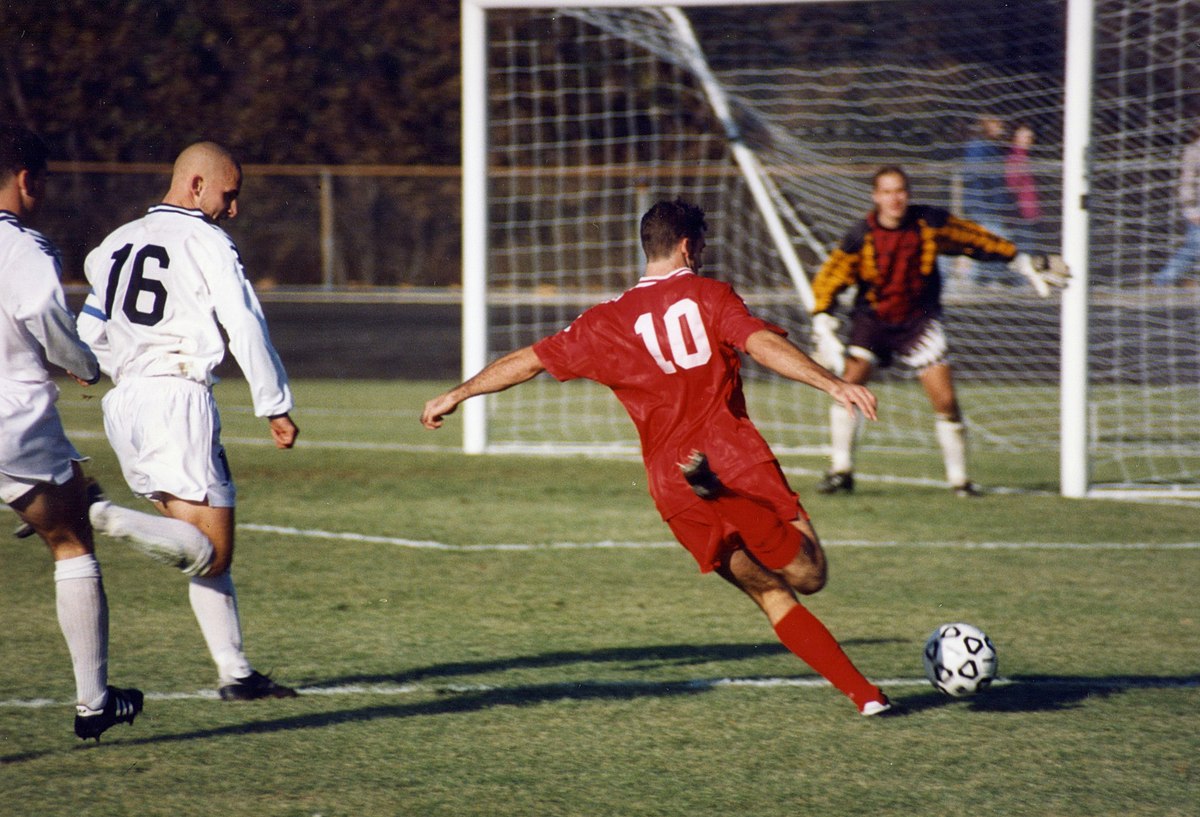
Why Is Soccer The World’s Most Popular Sport?
Why Is Soccer The World’s Most Popular Sport?
Soccer (or football as it’s known worldwide, except in the U.S.) is a way of life for millions of people. Watching their favorite team play isn’t just a pastime, or a social activity they try once in a while, it’s a part of their lifeblood, treated almost as an obligation.
Those who actually play the sport in their own teams and local tournaments numbered 265 million in a Fifa Big Count survey some years back. Since that study was published, soccer’s popularity has only increased, reaching a wider audience. Women’s soccer, in particular, is now far bigger than ever. While other sports and events have the power to grab global audiences in a cast-iron grip for weeks at a time (such as the Olympics or Wimbledon), nothing competes with soccer’s hold over people. So, why is soccer so wildly popular?
It’s Cheap To Play
You don’t need any expensive equipment to play soccer. Unlike basketball or ice hockey, which require hoops and specific flooring (for best results, anyway), soccer can be played almost anywhere. A group of friends can buy a cheap soccer ball and play almost anywhere they like. You can head down to the park, someone’s back yard, an indoor sports court, a parking lot – pretty much any spot is fertile ground for a game of soccer.
The goal posts can be designated by a couple of sweaters, backpacks, coats, or anything else which marks a short distance between two points. You can play in virtually any type of sneakers, and you don’t need to wear specific safety equipment, though shin guards are strongly encouraged. This means even poverty is no object to people’s love of soccer. We’ve all seen footage of kids playing the game in deprived areas around the world, laughing and having a blast despite their challenging environments. This can help to relieve tension, distract them from their problems, and build bonds within the community.
Anyone, of any background, can develop a love of soccer. Money is no object; a soccer ball can even be homemade with various materials if a ‘real’ ball is hard to find.
An International Playing Field
International competition is a key part of soccer. While other sports have tournaments that pit their teams against those from other countries, nothing is as wide-reaching as soccer’s international events. The World Cup and the European Cup are shown on TV to billions of people worldwide. For example, the 2014 Fifa World Cup reached an audience of 3.2 billion viewers, with one billion watching the final game.
These events can inspire real national pride in the countries taking part, lift the mood of entire nations, and give cultures with profound differences something to bond over. It’s an incredibly powerful sport that can inspire excitement in even the most ardent non-fans, with those who have never even watched a game before taking an interest in which team is crowned the winner. International soccer tournaments give countries which are smaller, poorer, and less recognized than others a chance to shine, drawing attention to any political or financial troubles they may be having.
Fast-Moving Play
Soccer is a fast-moving game. You can sit and watch an average game in 90 minutes, provided there is no extra time added or penalty shootouts. This gives you a sweet, short burst of excitement and competitiveness, and leaves you to continue on with the rest of your day. This is not the case for some other sports. Think about football here in the United States; as much as we love it (and, believe us, we do) the average NFL game can last around three hours or more. The constant stopping and starting creates a slower pace, and while it may be more tactical than soccer, football can be less engaging.
Basketball, ice hockey, and baseball are all less fluid and seamless than soccer. It’s so simple and straightforward, with fouls or the balls going out of bounds the most common reasons for short breaks in play. The game isn’t interrupted by commercials either, except during half-time, and time lost throughout the game is added at the end. In short, you can sit and watch a game of soccer without having to plan your entire afternoon or evening around it, though you certainly can if you want to.
Soccer Is Easy To Learn
Soccer is one of the easiest sports to learn: two teams move the ball from one end of the field to the other, trying to get the ball into their opponents’ goal. It’s a little more complex than this, of course, especially when you get into things like the off-side rule. This is why soccer can reach players of all ages, all cultures, all countries, regardless of borders or boundaries. With a ball and goalposts, any group of people can split into two teams and start playing.
The core rules are so simple to explain to anyone, even the biggest novices: all you need to do is move the ball with your feet, never touch it with your hands (unless you’re the goalkeeper or throwing it back into play). If you’re playing a quick game where nobody is too concerned about the rules, you can dive in and have fun. Of course, the full experience is quick to explain too. You can breeze over the red cards, yellow cards, corners, penalties, and even the off-side rule with minimal confusion. There’s far more for committed fans to get into and explore a deeper experience, but soccer’s simplicity is a definite factor in its popularity.
Soccer Is Accessible
Many sports demand their players to be in peak physical condition and have specific physical characteristics. Think of football, in which players in most positions have to be muscular, fast, and able to take heavy contact as just part of the game. Olympic events – swimming, running etc. – require an almost superhuman physique and constitution. Just look at the extreme definition and lack of body fat on competitors as they sprint around a circuit, burning through one lap after another without seeming to break a sweat. In basketball, players of a certain height are at a major advantage, and shorter people can struggle to play the game. Statistics show that someone who measures less than six feet will have just a one in 1.2 million chance of playing at NBA level.
Soccer, though, is less restrictive. Speed, agility, and skill with the ball are the most important factors – players don’t have to be Herculean. Of course, that’s not to say that anyone with a beer gut can make it big, but it’s far more accessible than the other sports. There are many soccer players who might be described as ‘short’, but this has no impact on their ability on the field. Being in peak physical shape is a major plus for you, sure, but your aptitude for the game is also very important.
High Safety Rates
Soccer is generally a safer sport to play than football, basketball, and baseball. In the United States in 2009, there were over 170,000 injuries during basketball games to children between 5 and 14 years old. 110,000 children of the same age were hurt while playing softball and baseball, while even cycling led to over 200,000 injuries. Football caused 215,000 injuries, which is incredibly unsurprising when you consider how much physical contact and powerful tackles take place in an average game.
Soccer, on the other hand, led to 88,000 injuries to children in that year. Those sports shown to be less harmful were ice hickey (more than 20,000), skateboarding (66,000), and snowboarding (25,000). Soccer may not be the most low-risk sport of all of these, but it’s far less risky than many others. While these statistics are for children, it’s more unlikely that adults will be harmed while playing, as they are more likely to have better control of their bodies, be able to keep frustrations in check, and know how to avoid causing injuries. Children playing under adult supervision will be at less risk, and it’s vital to cultivate youngsters’ grasp of fair play and the importance of the rules.
Artful, Inspirational Techniques
Playing soccer well is an art. Watching players control the ball with grace, style, and panache is part of soccer’s appeal. Passing, shooting for a goal, keeping the ball moving on the grass and in the air, weaving between opponents, and avoiding tackles all demand real skill. Being able to plot a path from one end of the field, knowing who to pass to, and spotting the best opportunity to shoot – it’s incredibly exciting watching players do all this for 90 minutes at a time. Technique and style can inspire spectators to try their own abilities with a ball, and potentially breed stars of the future.
Here at Dynasty Sports & Framing, we have supplied countless sports fans with their own custom memorabilia over the years, celebrating teams from all sports. If you’re in the Oxford Valley Mall area drop in and see us! We can help you showcase your favorite sport or player with custom frames, quality display cases, memorabilia, and much more!
